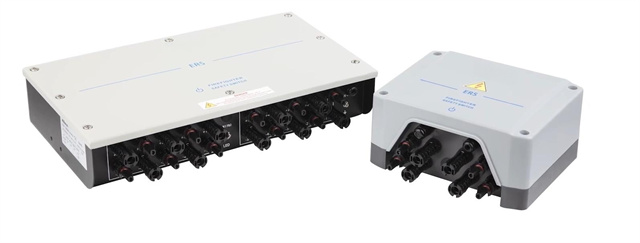Author:BLD Solar Energy SystemFROM:Solar System Converter Manufacturer TIME:2023-11-02
Rapid shutdown inverters have become an essential component in solar panel installations to enhance safety and meet industry regulations. These inverters enable quick and efficient shutdown of the solar system during emergencies or maintenance activities, minimizing the risk of electrical hazards. However, selecting the right rapid shutdown inverter can be a daunting task with the multitude of options available in the market. This article provides guidelines for choosing a rapid shutdown inverter to ensure optimal performance and compliance.

One of the primary factors to consider when selecting a rapid shutdown inverter is its voltage and power rating. The inverter should match the specifications of the solar panels and meet the voltage requirements of the installation. Additionally, it should be capable of handling the power output of the solar array without any performance limitations.

Ensure that the chosen rapid shutdown inverter is compatible with the communication protocols used in the solar system. Popular protocols include RS485, Power Line Communication (PLC), and Wireless Mesh, among others. Compatibility allows seamless integration and effective monitoring of the system.

Check for safety certifications such as UL 1741, NEC 2017, and Rapid Shutdown System (RSS) compliance. These certifications guarantee that the inverter meets the necessary safety standards and regulations, ensuring the protection of personnel and property.
Consider the ease of installation and the associated costs. Look for rapid shutdown inverters that come with user-friendly installation manuals, clear wiring diagrams, and comprehensive technical support. This ensures a hassle-free installation process and minimizes any potential errors or complications.
Choose a rapid shutdown inverter that offers monitoring and control features to remotely track the performance and status of the system. These features allow proactive maintenance, fault detection, and troubleshooting, enhancing the overall efficiency and longevity of the solar installation.
Ensure that the selected rapid shutdown inverter is designed to withstand harsh environmental conditions such as extreme temperatures, humidity, and UV exposure. Look for inverters with robust enclosures and protective features to ensure long-term durability and reliability.
Consider the upfront cost as well as the long-term value of the rapid shutdown inverter. Evaluate the total cost of ownership, including installation, maintenance, and any additional accessories required. Additionally, check for warranty terms and conditions to safeguard against any potential issues or defects.
Research customer reviews and seek recommendations from trusted sources or industry professionals. Real-world experiences and insights from other users can provide valuable information about the performance, reliability, and overall satisfaction with a particular rapid shutdown inverter.
Selecting a rapid shutdown inverter requires careful consideration of various factors such as voltage and power rating, compatibility, safety certifications, ease of installation, monitoring and control features, durability, cost, and reviews. By following these guidelines, you can make an informed decision and choose the most suitable rapid shutdown inverter for your solar panel installation, ensuring both safety and compliance.
